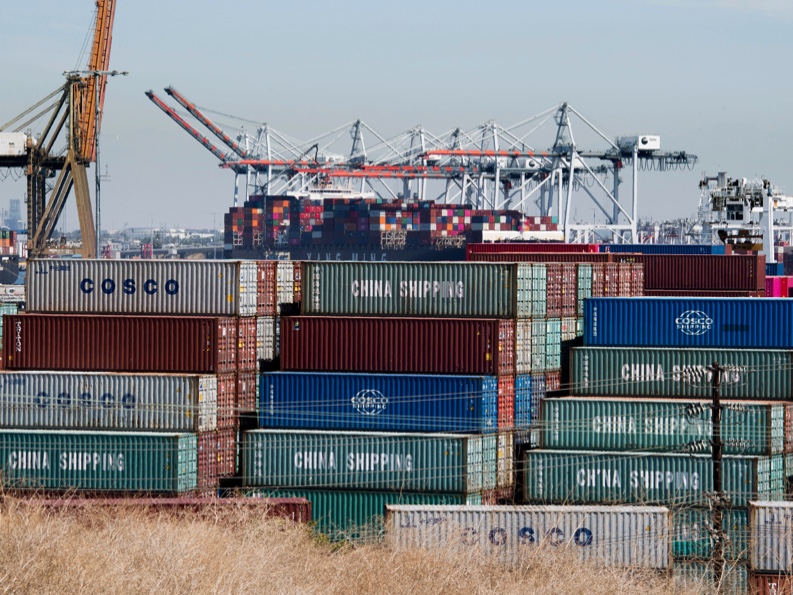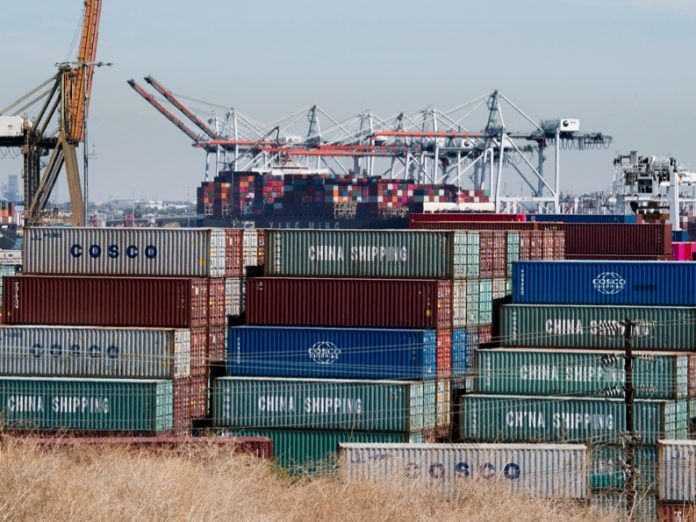ประเทศต่างๆ มักใช้ภาษีเพื่อปกป้องอุตสาหกรรมภายในประเทศ แต่ผลกระทบทางเศรษฐกิจมักมีความสำคัญน้อยกว่าที่คาดการณ์ไว้ เมื่อเร็วๆ นี้ฝ่ายบริหารของไบเดน ได้ประกาศอัตราภาษีใหม่สำหรับการส่งออกของจีน ซึ่งคาดว่าจะมีผลกระทบในระยะสั้นต่อ GDP และอัตราเงินเฟ้อน้อยที่สุด ภาษีเหล่านี้เป็นไปตามโครงการมูลค่า 3 แสนล้านดอลลาร์ของทรัมป์ที่กำหนดเป้าหมายไปที่จีนและพันธมิตรอื่นๆ ซึ่งยังคงมีผลบังคับใช้ ทรัมป์เสนอให้เก็บภาษีที่สูงขึ้น ซึ่งรวมถึงภาษี 10% สำหรับการนำเข้าทั้งหมด ซึ่งนักเศรษฐศาสตร์เตือนว่าอาจนำไปสู่การตกงานและอัตราเงินเฟ้อ
อัตราภาษีใหม่นี้คาดว่าจะเริ่มใช้ภายในปี 2569 สอดคล้องกับเศรษฐกิจที่แข็งแกร่งแต่ยังมีอัตราเงินเฟ้อที่สูงด้วย ตามที่ Ryan Sweet จาก Oxford Economics กล่าวไว้ ไม่น่าจะส่งผลกระทบต่อนโยบายการเงินอย่างมาก Sweet กล่าวว่าภาษีศุลกากรนั้นค่อนข้างน้อยในแง่ของผลกระทบต่ออัตราเงินเฟ้อและ GDP และธนาคารกลางสหรัฐไม่น่าจะใช้สิ่งเหล่านี้เป็นเหตุผลในการรักษาอัตราดอกเบี้ยให้อยู่ในระดับสูง ความคาดหวังเหล่านี้ยังคงไม่เปลี่ยนแปลงแม้ว่าจะได้เรียนรู้เพิ่มเติมเกี่ยวกับแผนภาษีของฝ่ายบริหารของ ไบเดน แล้วก็ตาม
Sweet เน้นย้ำว่าภาษีศุลกากรมักมีเหตุผลทางการเมืองมากกว่าเหตุผลทางเศรษฐกิจ เนื่องจากภาษีเหล่านี้เพิ่มต้นทุนสำหรับผู้จัดจำหน่าย ผู้ค้าปลีก และผู้บริโภคในสหรัฐฯ ด้วยการเก็บภาษีนำเข้าเมื่อเดินทางมาถึง จากข้อมูลของคณะกรรมาธิการการค้าระหว่างประเทศของสหรัฐอเมริกา ผู้นำเข้าของสหรัฐฯ ต้องรับผิดชอบค่าใช้จ่ายเกือบทั้งหมดของภาษีศุลกากรของทรัมป์ในการศึกษาปี 2566 นอกจากนี้บางธุรกิจยังใช้ประโยชน์จากสงครามการค้าด้วยการขึ้นราคาอีก เฟดนิวยอร์กพบว่าภาษีศุลกากรปี 2561 เพิ่มภาระภาษีและความไร้ประสิทธิภาพของตลาด ส่งผลให้ครัวเรือนในสหรัฐฯ เสียค่าใช้จ่าย 419 ดอลลาร์ต่อปี อย่างไรก็ตาม ผลประโยชน์ทางเศรษฐกิจของภาษีศุลกากรยังคงไม่ชัดเจน ดังที่ระบุไว้ในเอกสารทำงานของสำนักงานวิจัยเศรษฐกิจแห่งชาติ เดือนมกราคม 2567
การหยุดชะงักของห่วงโซ่อุปทานของการแพร่ระบาดของ Covid-19 ทำให้การประเมินว่าภาษีศุลกากรปี 2561-2562 ส่งผลกระทบต่อการผลิตและการค้าของสหรัฐฯ นักเศรษฐศาสตร์ของ Wells Fargo ระบุ ในขั้นต้น ผู้นำเข้าของสหรัฐฯ หันเหความสนใจจากสินค้าจีน แต่การนำเข้าจากจีนดีดตัวขึ้นตามความต้องการที่เพิ่มขึ้น นักเศรษฐศาสตร์ของ Wells Fargo กล่าว ภายในสิ้นปี 2566 การนำเข้าจากจีนลดลง 3% เมื่อเทียบกับปี 2562 ในขณะที่การนำเข้าจากประเทศอื่น ๆ เพิ่มขึ้น 50% นิโคล แชร์วี นักเศรษฐศาสตร์กล่าว ข้อมูลล่าสุดเกี่ยวกับการขนส่งทางทะเลและทางอากาศชี้ให้เห็นว่าจีนอาจพยายามหลีกเลี่ยงภาษีของสหรัฐฯ ผ่านเม็กซิโก โดยการขนส่งตู้คอนเทนเนอร์นำเข้าจากจีนไปยังเม็กซิโกพุ่งสูงขึ้น 60% ในเดือนมกราคมและ 34% สำหรับไตรมาสแรก ตามข้อมูลของ Peter Sand หัวหน้านักวิเคราะห์ของ Xeneta
The potential impact of Biden’s tariffs on Chinese imports on American jobs, the economy, and inflation.

Countries often use tariffs to protect domestic industries, but their economic impact is often less significant than anticipated. The Biden administration recently announced new tariffs on Chinese exports, expected to have minimal short-term effects on GDP and inflation. These tariffs follow Trump’s earlier $300 billion program targeting China and other partners, which remains in effect. Trump had proposed even higher tariffs, including a 10% tariff on all imports, which economists warned could lead to job losses and inflation.
The new tariffs, expected to be implemented by 2026, coincide with a strong economy but also high inflation. According to Ryan Sweet from Oxford Economics, they are unlikely to affect monetary policy significantly. Sweet stated that the tariffs are relatively minor in terms of their impact on inflation and GDP, and the Federal Reserve is unlikely to use them as justification for maintaining high interest rates. These expectations remain unchanged even after learning more about the Biden administration’s tariff plans.
In 2002, President George W. Bush’s tariffs on imported steel and aluminium products led to higher prices for American steel-consuming industries and job losses, particularly among smaller firms. President Barack Obama’s 2009 tariffs on Chinese tires preserved about 1,200 US jobs but cost Americans $1.1 billion in higher prices. President Trump’s 2018 tariffs didn’t boost manufacturing employment but resulted in job losses and increased consumer prices due to higher input costs and retaliatory tariffs.
Sweet highlighted that tariffs often have more political than economic rationale, as they increase costs for US distributors, retailers, and consumers by taxing imports upon arrival. According to the US International Trade Commission, US importers bore almost the entire cost of Trump’s tariffs in a 2023 study. Additionally, some businesses took advantage of the trade war by raising prices further. The New York Fed found that the 2018 tariffs increased the tax burden and market inefficiencies, costing US households $419 annually. Despite this, the economic benefits of the tariffs remain unclear, as noted in a January 2024 National Bureau of Economic Research working paper.
The Covid-19 pandemic’s disruption to supply chains complicates the assessment of how the 2018-2019 tariffs affected US manufacturing and trade. Initially, US importers shifted away from Chinese goods, but imports from China rebounded as demand surged, noted Wells Fargo economists. By the end of 2023, imports from China decreased by 3% compared to 2019, while imports from other countries surged by 50%, said economist Nicole Cervi. Recent data on ocean and air freight suggests China may be attempting to evade US tariffs via Mexico, with container shipping imports from China to Mexico spiking by 60% in January and 34% for the first quarter, according to Peter Sand, chief analyst at Xeneta.
By CNN NEWS

















